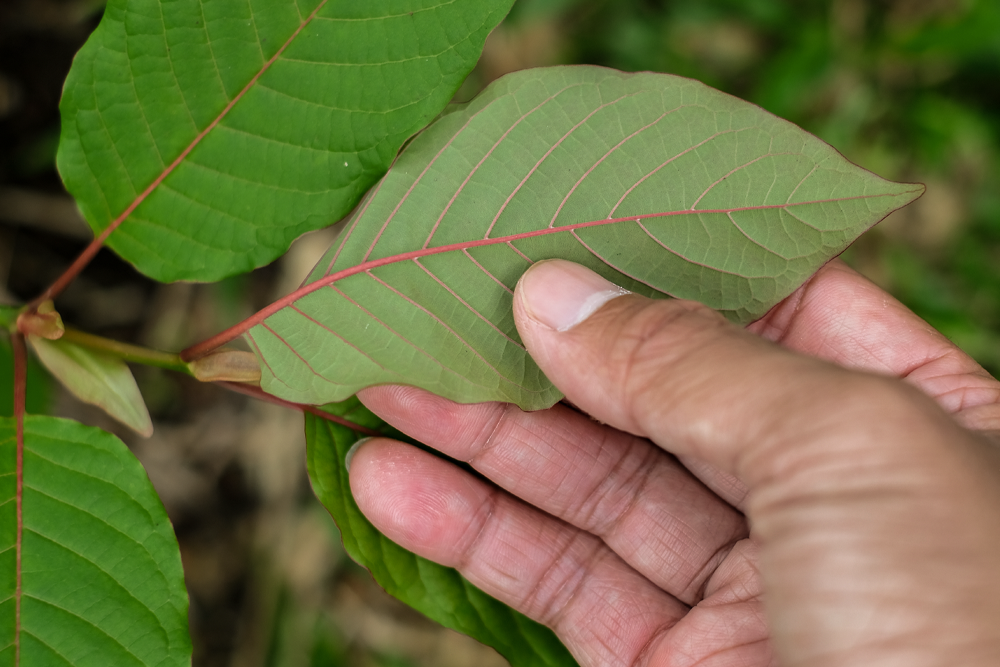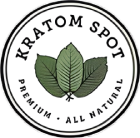
Known scientifically as Mitragyna speciosa, kratom trees grow like wildfire amid the tropical landscapes of Southeast Asia. It is so common, locals even report starting kratom farms in their own backyards. And in the West, kratom has a different meaning…
Wellness!
Finely-ground kratom powders have become quite popular throughout the United States. Users ingest this powder in order to access the reported wellness benefits of the mighty kratom tree. But despite U.S. popularity, kratom powder isn’t the only product on the market.
Some realtors now offer Stem and Vein kratom, a less recognizable kratom product. What is it? What can it do? And should you use it?
The Basics of Stem and Vein Kratom
In order to fully understand Stem and Vein, kratom fans must first understand kratom processing. In layman’s terms, it works like this:
- Kratom trees grow big, healthy kratom leaves.
- Once these leaves reach the desired level of maturity, harvesters gently cut them off so the plant can keep growing new leaves.
- Harvested kratom leaves are de-veined and de-stemmed.
- Leaves are dried, often sun-dried (if processed in Southeast Asia).
- Processors crush the dried leaves into its final form: kratom powder.
NOTE: Kratom leaf-derived products like kratom powder and capsules are often sold under different classifications. This may include color strains like Red Vein, White Vein, and Green Vein Kratom. Here, kratom veins determine leaf maturity, telling harvesters when to start cutting leaves. Therefore, the veins themselves are not left in the final product when purchasing these strain colors.
And what happens to all those stems and veins from Step 3? You guessed it: processors collect this leftover plant material to create Stem and Vein kratom products. These products, often described as having the consistency of loose leaf tea, reportedly offer additional benefits to your kratom regimen. However, no scientific reports have validated such claims to date.
So…
What Can Stem and Vein Kratom Do For You?
There is some controversy surrounding Stem and Vein kratom. For starters, some kratom users believe in the efficacy of Stem and Vein. Others think these products are a retail cash-grab, profiting from the successes of the kratom industry overall.
The truth often lies somewhere in the middle.
Stem and Vein kratom preparations reportedly contain kratom’s signature alkaloids: mitragynine and 7-hydroxymitragynine. These naturally-occurring alkaloids are responsible for the kratom plant’s identifiable benefits. Think of alkaloids as microscopic chemicals, giving the kratom plant its abilities.
We already know that kratom leaves contain very high concentrations of both mitragynine and 7-hydroxymitragynine. If anecdotal—unscientific—claims prove trustworthy, then Stem and Vein kratom preparations also contain these key alkaloids. Unfortunately, this does NOT mean kratom users should jump ship for Stem and Vein.
It is reported that Stem and Vein kratom contains a weaker concentration of mitragynine and 7-hydroxymitragynine. Furthermore, many long-time kratom users advocate that Stem and Vein cannot replace typical products like kratom powder.
Instead, users interested in Stem and Vein should take it as a kratom potentiator, a supplement that can enhance the effects of typical kratom products overall. It is entirely possible that a combination of these two kratom varieties would increase the effects you feel.
Unfortunately, because Stem and Vein products contain lower concentrations of kratom’s alkaloids, we do not recommend only taking Stem and Vein. This could result in a wasted dose. Furthermore, we believe more research into Stem and Vein is needed before a concrete decision can be made about its use.
Here are some examples of what scientists still have to determine about Stem and Vein kratom:
- What is the definitive alkaloid content?
- How does it interact with other kratom alkaloid-containing products?
- Does it interact with any medications or other supplements?
- Is it really a kratom potentiator or just a sham?
- Does it have variant effects from other kratom products?
- Could it target different areas of treatment (different ailments, etc.)?
As of the writing of this piece, kratom science has not yet examined Stem and Vein as a unique kratom preparation with perhaps varying effects. Instead, modern scientific analysis rightly focuses on kratom leaf-derived alkaloids.
Potential Downside to Stem and Vein Kratom
We already mentioned that Stem and Vein kratom products lack a lot of scientific understanding. We also know that Stem and Vein is not an outright replacement for typical kratom products. They simply do not contain high enough concentrations of the plant’s key alkaloids. So, treat Stem and Vein products as add-ons to your kratom regimen.
On top of that, Stem and Vein lacks variety. As we stated earlier, kratom powder is available in three primary color strains:
- Red Vein Kratom: high leaf maturity, known for its calming effects.
- White Vein Kratom: young leaf maturity, known for its uplifting effects.
- Green Vein Kratom: middle maturity, known as a hybrid of Red Vein and White Vein kratom.
Leaf-born kratom products also offer location-specific strains. This includes any number of Southeast Asian countries with unique, biodiverse kratom trees. The most popular location-based strain is Thai Maeng Da, celebrated for its raw power and effectiveness. However, many kratom users revel in Indo, Sumatra, even Bali-derived kratom powders.
With Stem and Vein kratom, consumers simply don’t have access to the same variety. Furthermore, Stem and Vein is often sold as an afterthought, accompanied by generic packaging. The only benefit we see here is the price tag (depending on where you buy, of course).
Some kratom DIYers have also reported problems with Stem and Vein. For example, when attempting to make kratom-infused soaps, users report chunky plant material in the final product. When making kratom soap with kratom powder, on the other hand, the finely-ground plant material blends well with almost any DIY kratom soap recipe.
Is Stem and Vein Kratom a Scam?
We’ve covered many kratom scams here at Kratom Spot. These scams often follow similar themes: money-hungry companies marketing unproven claims to turn a profit. But Stem and Vein is different.
If it weren’t for Stem and Vein kratom, much of the plant material lost in processing would go completely to waste. The kratom industry prides itself on sustainability and eco-consciousness. If there is a way to reduce biological waste during the kratom production process, we’re all for it!
In addition, the theory of Stem and Vein as a kratom potentiator holds weight. Let’s look at another wellness-focused industry, for example’s sake. The CBD industry also sells a variety of product variants, mainly: CBD isolates and full spectrum CBD.
- CBD isolates are made by extracting only the CBD cannabinoids (kind of like kratom’s alkaloids, but for cannabis) from the hemp plant.
- Full spectrum CBD is made by extracting all the cannabinoids, terpenes, amino acids, and hundreds of other organic compounds from whole hemp plants.
CBD users swear by full spectrum CBD, saying the combination of natural hemp compounds increases the bioavailability (bodily absorption rate) and efficacy of CBD treatment. Can this mean the same for other wellness plants like kratom? What if combining all the natural compounds (not just alkaloids) from Mitragyna speciosa plants allows for a more effective kratom dose?
With all of this in mind, Kratom Spot does not currently sell Stem and Vein kratom. We will continue to conduct in-house research and formulate the best possible kratom product varieties for our Kratom Spot family. If our arsenal one day includes Stem and Vein kratom products, you’ll likely be the first to know!
Have you tried Stem and Vein kratom? Let us know in the comments! We’d love to hear your experiences of new and potentially beneficial kratom varieties.

